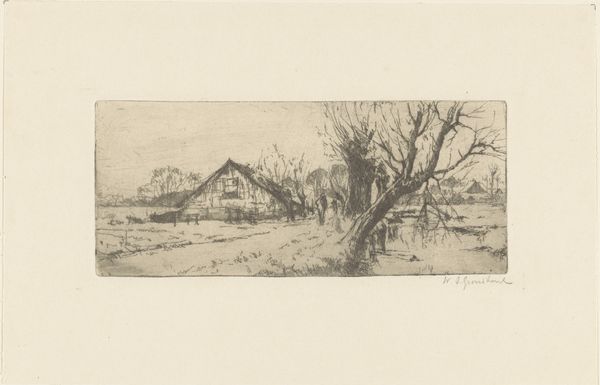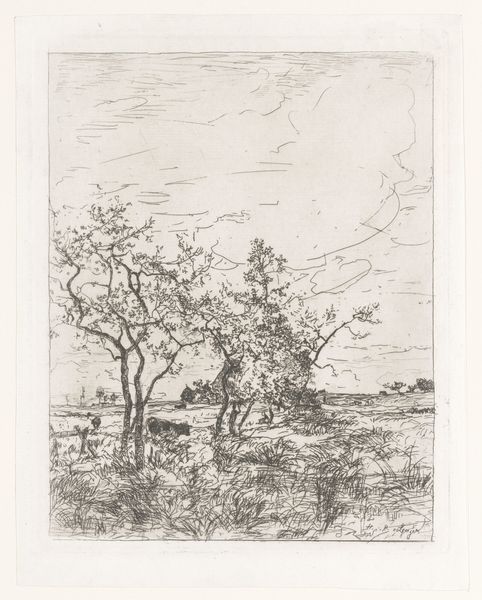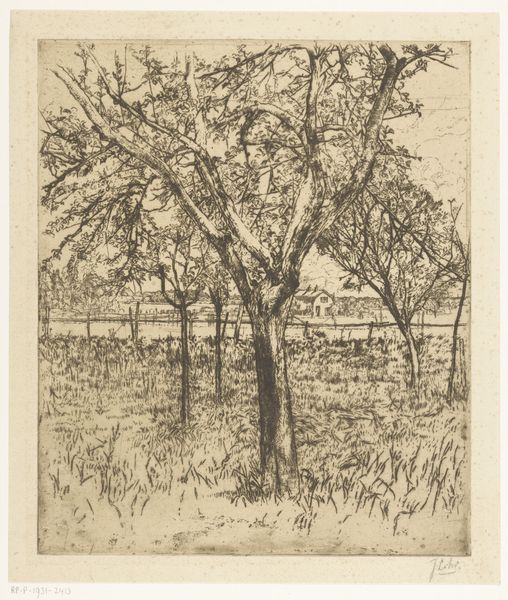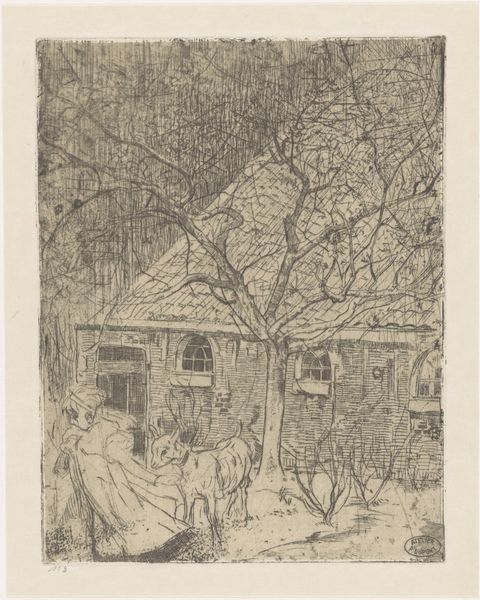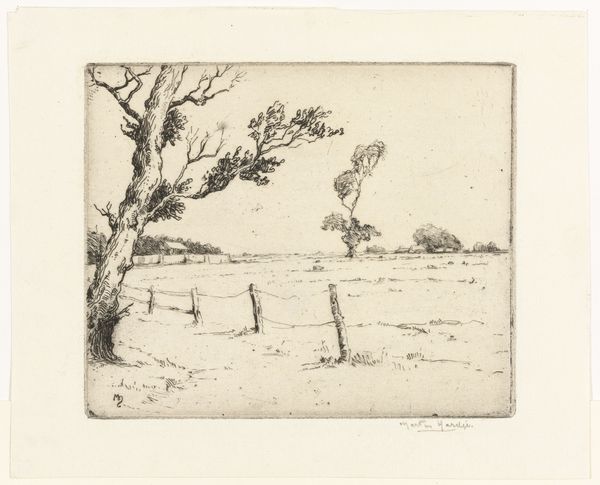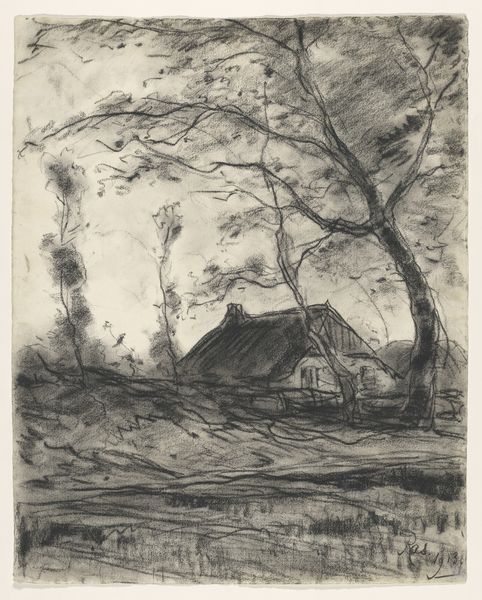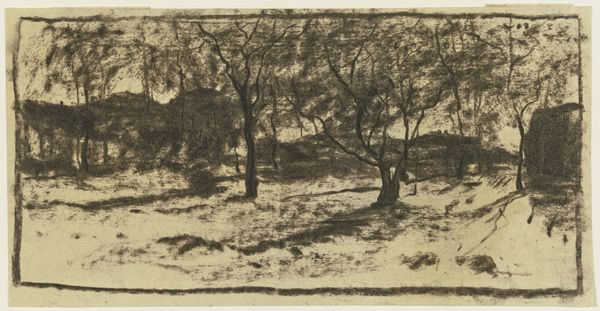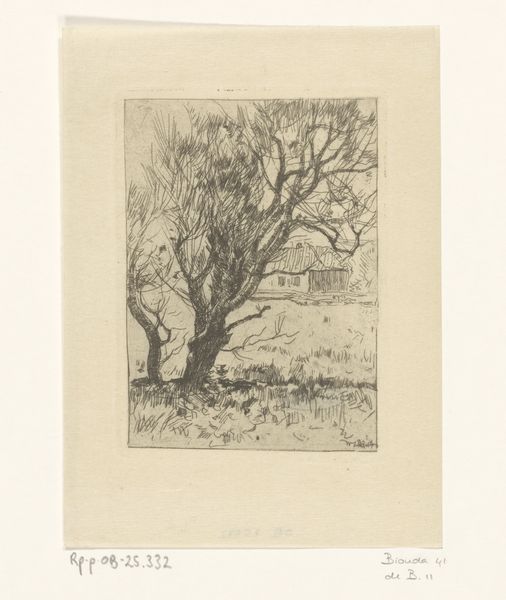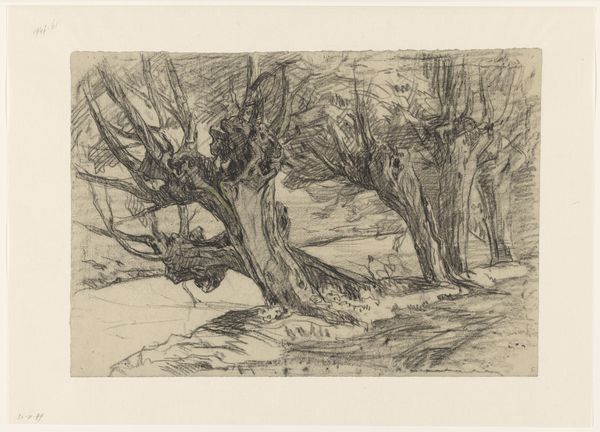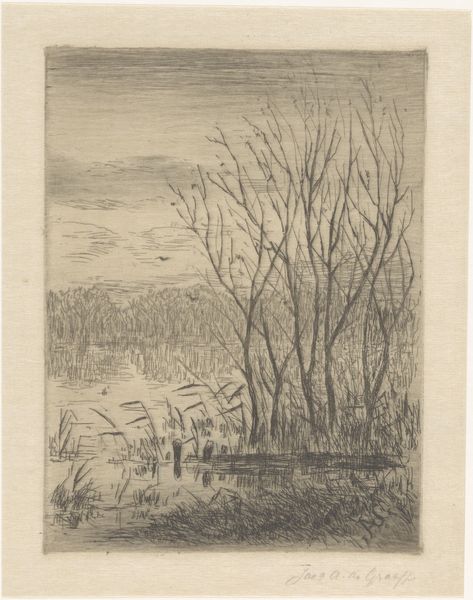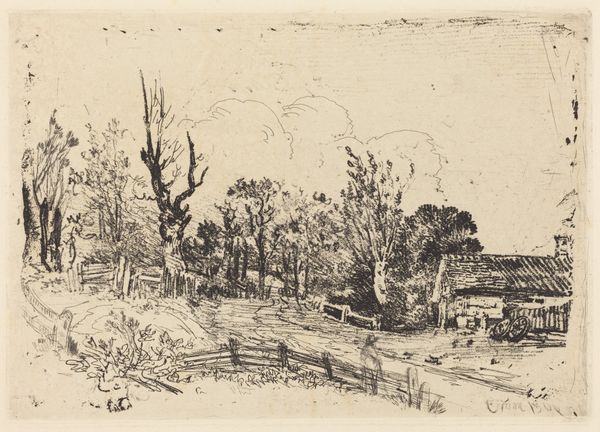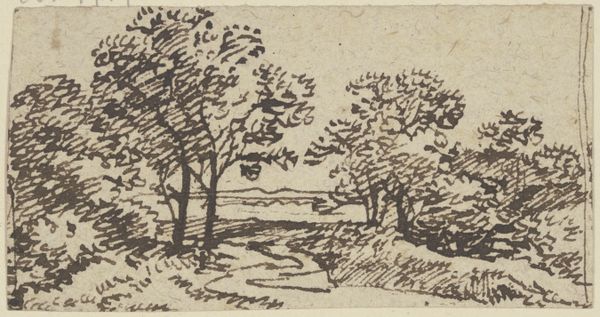
drawing, print, etching
#
drawing
# print
#
etching
#
landscape
#
etching
#
realism
Dimensions: height 193 mm, width 137 mm
Copyright: Rijks Museum: Open Domain
Editor: Here we have "Two pollard willows in front of a fence," an etching by Pieter Dupont, likely created between 1880 and 1911. There's a stark, almost melancholy feel to this landscape. What symbolic meaning do you draw from such imagery? Curator: Consider the pollard willows themselves. They are pruned and shaped. Do they not symbolize resilience and adaptability? The bare branches against the sky...they speak of cycles of life and the dormant potential within. Editor: That makes sense. It seems like the trees have gone through a lot but remain in this space. How does the presence of the fence affect the overall message, if at all? Curator: The fence, a boundary marker, perhaps represents civilization's impact on nature, the attempts to contain or define the natural world. Yet, the trees persist, transcending that boundary. The etching medium itself, with its fine lines and delicate textures, seems to embody a sense of transience. Doesn’t the print quality feel ephemeral to you? Editor: I see that, it almost has a nostalgic feel, now that you mention it. Are we perhaps meant to reflect on how humanity interacts with the natural landscape? Curator: Precisely. Dupont subtly invites us to ponder our relationship with nature, questioning our role as shapers, protectors, or even disruptors of the environment. How do you feel it sits alongside broader art movements in the same era? Editor: This piece provides so much to reflect upon. Considering all of the visual motifs, I am starting to wonder about my personal relationship to the natural world and how that’s visually framed. Curator: Exactly. It has made me consider, again, how an apparently straightforward scene contains layers of cultural memory, ecological observation and introspective feelings.
Comments
No comments
Be the first to comment and join the conversation on the ultimate creative platform.
